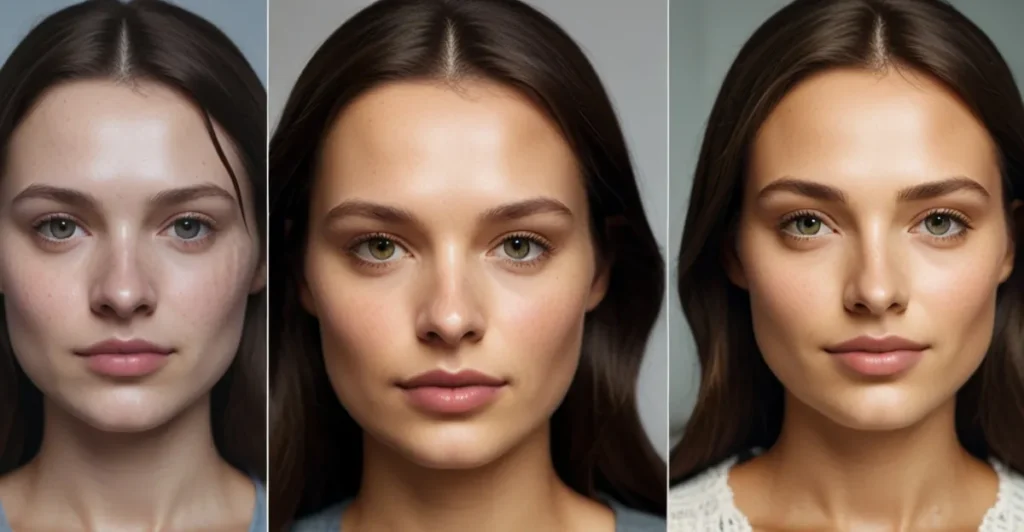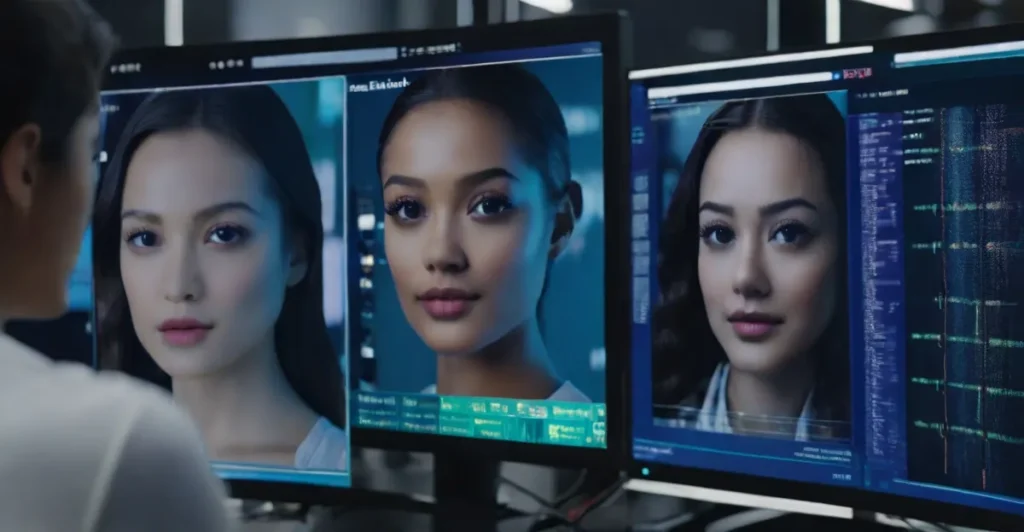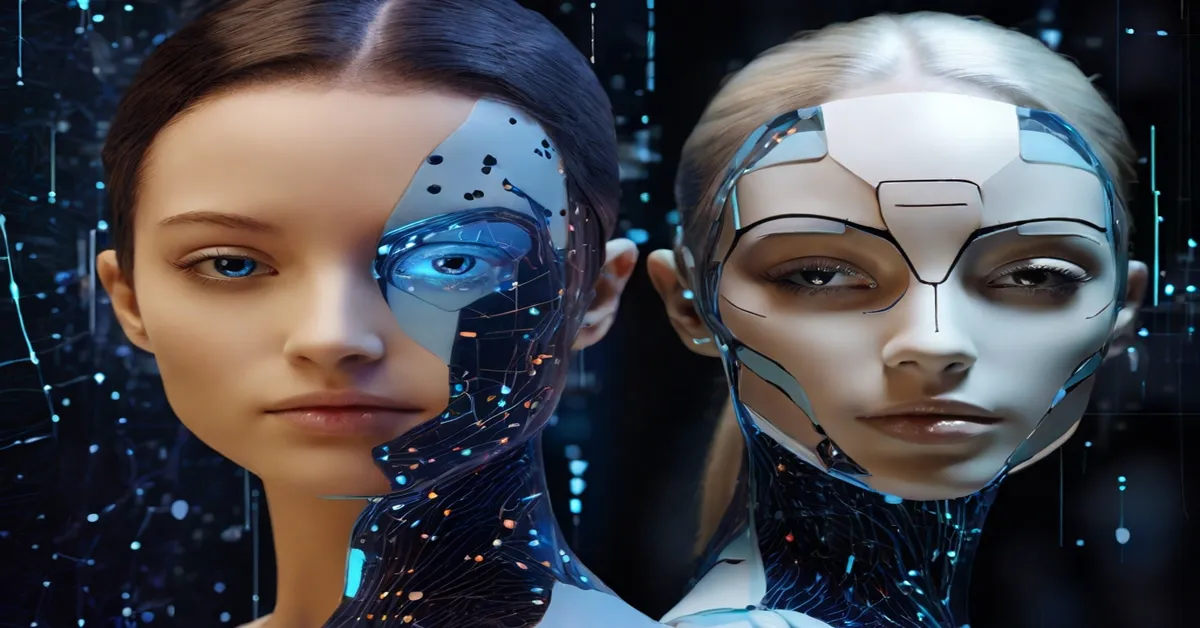In a world dominated by digital content, it seems like AI face-swapping is everywhere—from viral social media posts to Hollywood blockbusters. But what exactly is AI face-swapping, and why has it become such a popular trend? Let’s dive into the fascinating world of AI face-swapping, uncover its secrets, and explore its impact on society.
What is AI Face Swapping?
AI face swapping is a technology that allows one person’s face to be digitally replaced with another person’s face in images or videos. While face-swapping itself isn’t new, the use of artificial intelligence (AI) has taken this concept to the next level. AI-powered face-swapping leverages machine learning and neural networks to create hyper-realistic swaps that look almost indistinguishable from real life. This is what sets it apart from traditional face-swapping techniques, which often resulted in unnatural or imperfect visuals.

The Evolution of AI in Face Swapping
The journey of face-swapping technology started with simple photo editing techniques. Early attempts were often rudimentary, requiring manual adjustments to match skin tones and facial expressions. However, as AI and machine learning evolved, so did the sophistication of face-swapping. The introduction of deepfake technology in the mid-2010s was a major turning point. Deepfake, which uses deep learning and GANs (Generative Adversarial Networks), enabled more seamless and realistic face swaps, sparking a wave of interest in this technology.
Today, AI face-swapping is more accessible than ever, with countless apps and software tools available to the general public. What was once a complex and niche technology has now become mainstream, driving its popularity as a trend in both casual and professional settings.
How AI Face Swapping Works

At the core of AI face-swapping is deep learning, a subset of machine learning that involves training models on large datasets of images. Here’s a simple breakdown of the process:
- Input Phase: The AI model is fed with images or videos of the source face (the face that will be swapped) and the target face (the face that will replace it).
- Training Phase: The AI model learns to recognize and map facial features, expressions, and movements. This training usually involves large amounts of data to ensure accuracy.
- Generation Phase: Using neural networks, particularly GANs, the AI generates a new face that mimics the target face while preserving the source face’s original expressions and movements.
- Output Phase: The final product is a hyper-realistic face swap, often so convincing that it can fool the human eye.
Popular Tools and Apps for AI Face Swapping
The popularity of AI face-swapping can be attributed in part to the availability of user-friendly apps and tools. Some of the most well-known include:
- Deepfake Technology: A more advanced option, allowing for highly realistic video face swaps.
- Snapchat’s Face-Swapping Feature: One of the earliest and most popular face-swapping tools, widely used for social media posts and entertainment.
- FaceApp: Known for its AI-driven face aging and swapping features, this app took the internet by storm with viral challenges.
- Professional Software Tools: Programs like Adobe After Effects or custom AI solutions allow for more precise and high-quality face swaps, often used in the film and entertainment industries.
These tools have democratized the use of AI face-swapping, making it accessible to everyone, from casual users to professionals in media production.
The Science Behind AI Face Swapping

The technology behind AI face-swapping relies on machine learning models trained on vast amounts of data. These models use neural networks, which are designed to mimic the way the human brain processes information, allowing them to learn and recognize facial patterns with incredible accuracy.
GANs play a crucial role in generating realistic images. Essentially, GANs consist of two neural networks—the generator and the discriminator—that work in tandem. The generator creates new images, while the discriminator evaluates them against real images to determine their authenticity. Over time, this process results in face swaps that are nearly indistinguishable from reality.
Applications of AI Face Swapping
AI face-swapping isn’t just a viral trend; it has a wide range of applications across various industries:
- Entertainment and Media: From movie special effects to TV shows, AI face-swapping is being used to create realistic character portrayals, even bringing deceased actors back to life on screen.
- Social Media: AI face-swapping has become a popular way to create funny or shocking content, with countless memes and viral videos circulating online.
- Gaming and Virtual Reality: In the gaming world, AI face-swapping can be used to create personalized avatars or enhance immersive experiences.
AI Face Swapping in Hollywood
Hollywood has been quick to adopt AI face-swapping for creative purposes. One of the most notable examples is the recreation of deceased actors, such as Carrie Fisher in Star Wars: The Rise of Skywalker. AI made it possible to recreate Fisher’s likeness, allowing her character to appear in the film even after her passing.
However, this use of AI face-swapping raises ethical concerns. While it can enhance storytelling, it also prompts questions about consent and the rights of deceased individuals. Hollywood must balance innovation with respect for privacy and ethics.
Ethical Concerns Surrounding AI Face Swapping
As with any powerful technology, AI face-swapping comes with ethical challenges. Deepfake technology, in particular, has been criticized for its potential to spread misinformation and manipulate public opinion. For example, deepfake videos can be used to create realistic but false content featuring politicians or public figures, leading to confusion and distrust.
There are also privacy concerns. AI face-swapping makes it easier for bad actors to create unauthorized content using someone else’s likeness. This can lead to identity theft, defamation, or even cyberbullying. It’s crucial for society to address these risks as AI face-swapping continues to grow in popularity.
Regulation and Legal Implications
Governments and regulatory bodies are starting to take notice of AI face-swapping technology. Some countries have implemented laws specifically targeting deepfake technology, aiming to prevent its misuse. However, global regulation remains fragmented, and the legal landscape is still evolving.
In the U.S., some states have passed laws that criminalize the creation and distribution of deepfakes without consent, particularly in cases involving defamation or exploitation. As AI face-swapping continues to develop, it’s likely that more comprehensive regulations will emerge to address the ethical and legal implications.
